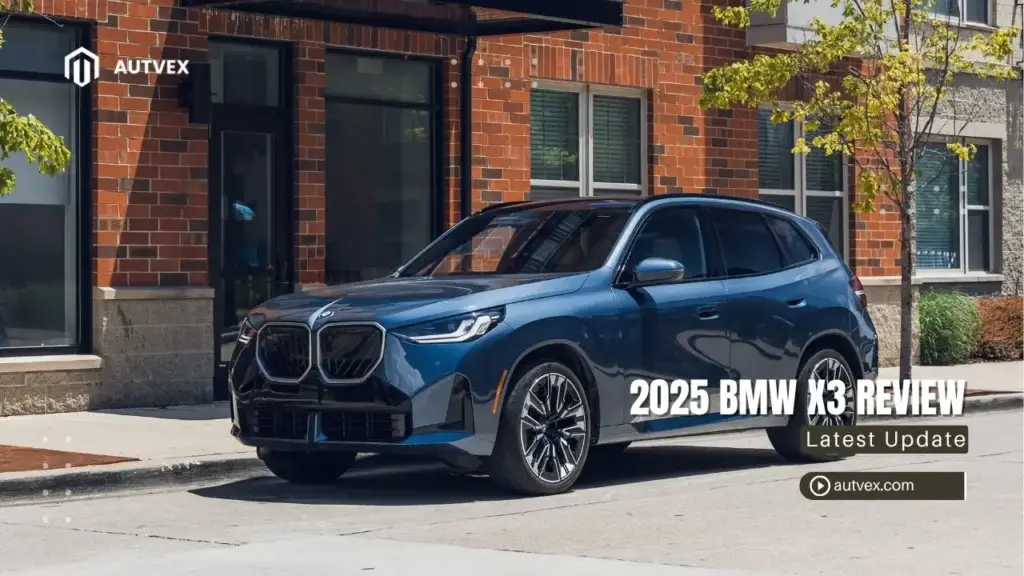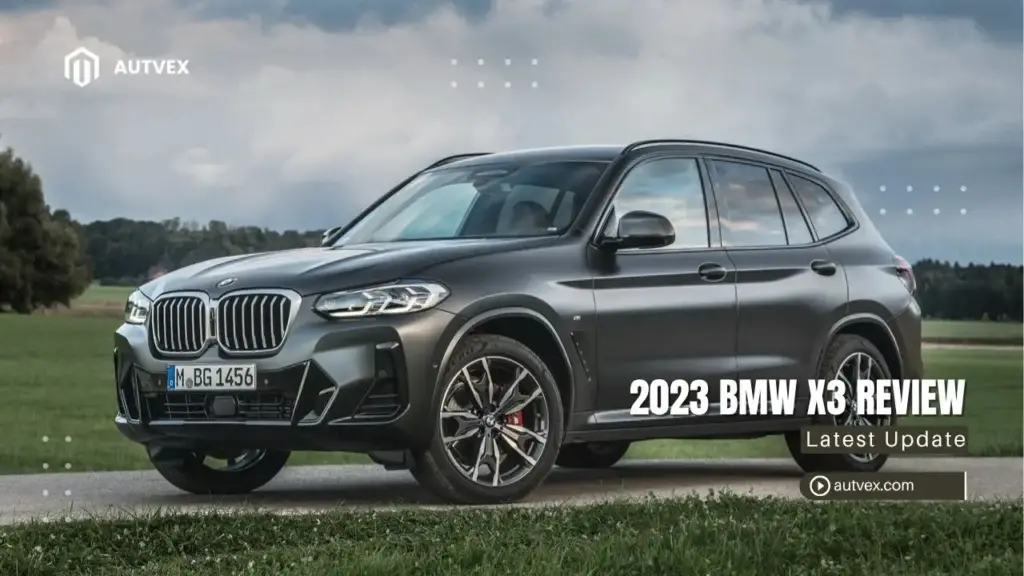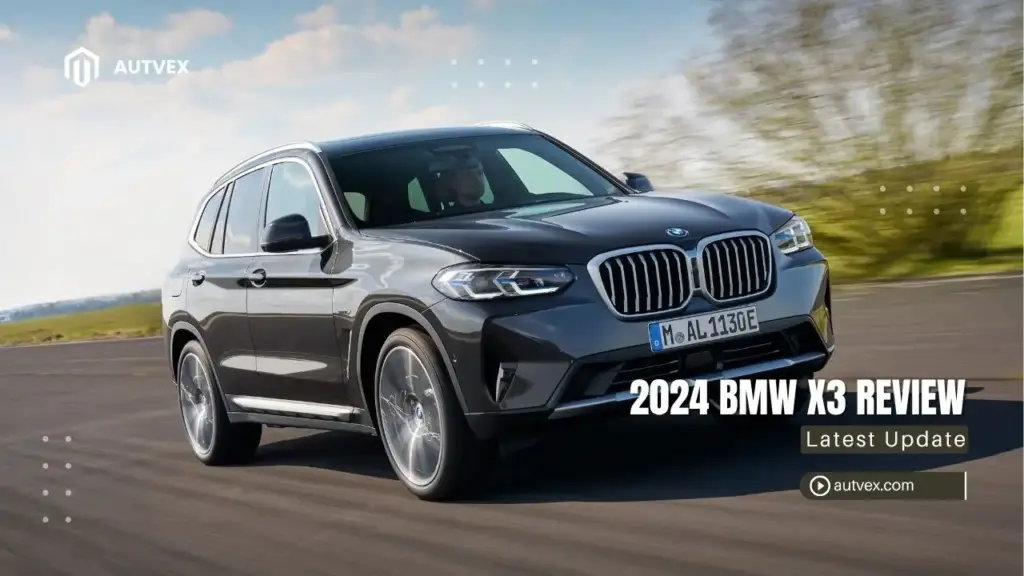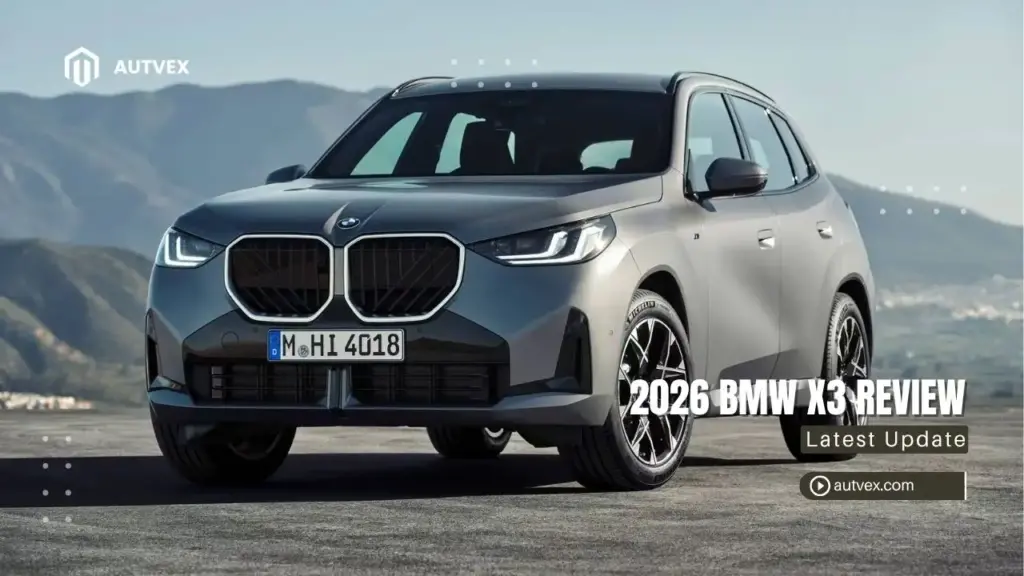You may also like:
The 2025 BMW X3 represents a complete fourth-generation redesign featuring 48-volt mild hybrid technology, with the X3 30 xDrive starting at $49,500 producing 255 horsepower and achieving 29 mpg combined, while the M50 xDrive starts at $64,100 delivering 393 horsepower[1][2]. This comprehensive refresh brings longer (187.2″), wider (75.6″), and lower (65.4″) proportions, BMW’s latest iDrive 9 operating system housed in a 14.9-inch Curved Display, and class-leading cargo capacity of 31.5-67 cubic feet[1]. Consumer Reports praises the redesigned X3 as “a delightful small luxury SUV, with a peppy, polished, and fuel-efficient powertrain, nimble handling, and comfortable seats,” though notes “the controls are harder to use than in the previous X3”[3]. For American buyers considering the BMW X3, understanding the comprehensive changes and early owner feedback proves essential before making this significant investment.
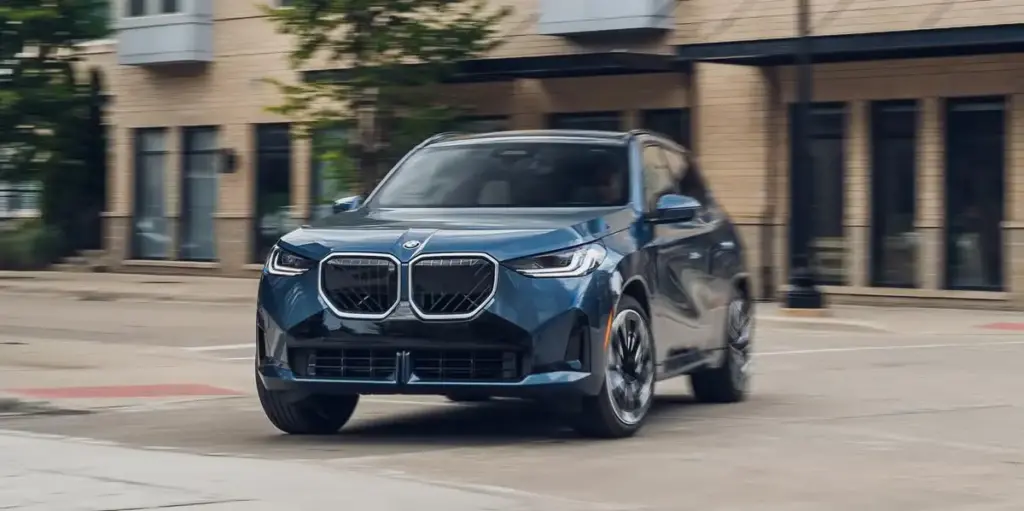
2025 BMW X3 Overview: Fourth-Generation Redesign
Complete Redesign for 2025 Model Year
The 2025 BMW X3 debuts as the fourth generation (G45) with comprehensive changes representing the first major transformation rather than an evolutionary update[1][2]. BMW stiffened the chassis for improved driving dynamics while revising front and rear fascias with bold modern styling that now makes the X3 larger than the first-generation BMW X5—a significant size growth reflecting changing consumer preferences.
Fourth-Generation Redesign Highlights:
| Category | Changes |
|---|---|
| Platform | All-new G45 architecture (complete redesign) |
| Dimensions | Longer, wider, lower than predecessor |
| Chassis | Stiffened structure, improved rigidity |
| Heritage | Over 3.5 million X3 units sold since 2004 |
| Production | Spartanburg, South Carolina assembly |
| Market position | BMW’s best-selling model in United States |
The X3 has evolved from its 2004 debut when it helped kickstart the compact luxury crossover segment into BMW’s bestselling model globally[2].
What’s New for 2025
BMW introduced transformative updates for the redesigned fourth generation[1][2]:
- 48-volt mild hybrid technology added to both four-cylinder and six-cylinder engines providing up to 23 hp and 148 lb-ft electric boost
- New trim names: X3 30 xDrive and X3 M50 xDrive (BMW drops “i” from gasoline model names, reserving for EVs exclusively)
- iDrive 9 operating system with BMW Curved Display combining 12.3-inch digital instrument cluster and 14.9-inch center touchscreen
- Standard all-wheel drive across entire lineup (no rear-wheel-drive or front-wheel-drive variants for US market)
- Standard spare tire (previously optional on outgoing generation)
- Increased cargo capacity: 10% more space than previous generation reaching class-leading 31.5-32 cubic feet
- Improved fuel efficiency despite power increases (29 mpg combined for 30 xDrive)
- Enhanced interior space and materials with bold tech-forward cabin design
Notably, BMW’s Spartanburg, South Carolina plant assembles the 2025 X3, underscoring its importance to the American market[3].
Who Should Buy the 2025 BMW X3?
The redesigned X3 suits specific buyer profiles[1][3]:
- Driving enthusiasts seeking balanced compact luxury SUV combining sportiness with daily usability
- Families needing class-leading cargo capacity (31.5-67 cubic feet) exceeding Audi Q5 and Mercedes GLC
- Tech-forward buyers wanting BMW’s latest iDrive 9 system with retained physical rotary controller
- Towing needs: Those requiring capability from 4,000-4,850 pounds depending on trim selection
- Fuel efficiency priorities: Buyers appreciating 29 mpg combined while maintaining 255 hp performance
- BMW loyalists seeking updated fourth-generation model with proven pedigree
- Balanced preferences: Anyone wanting sportiness without harsh ride quality compromises
Prospective buyers should understand how long it takes to buy a car to plan their purchase timeline effectively in today’s market.
Who Should Consider Alternatives?
The X3 isn’t ideal for everyone[1]:
- Budget-conscious buyers: Audi Q5 ($47,000) and Genesis GV70 ($48,000) offer lower entry prices
- Ultimate luxury seekers: Those prioritizing materials over driving dynamics may prefer Mercedes-Benz GLC
- Plug-in hybrid needs: Volvo XC60 T8 offers PHEV option not available on X3
- Tech-averse shoppers: Those frustrated by touchscreen-heavy controls and steep learning curves
- Three-row families: Need larger BMW X5 for third-row seating
- Conservative styling: Shoppers seeking non-polarizing exterior design
- Design language concerns: Anyone disliking BMW’s new split kidney grille aesthetic
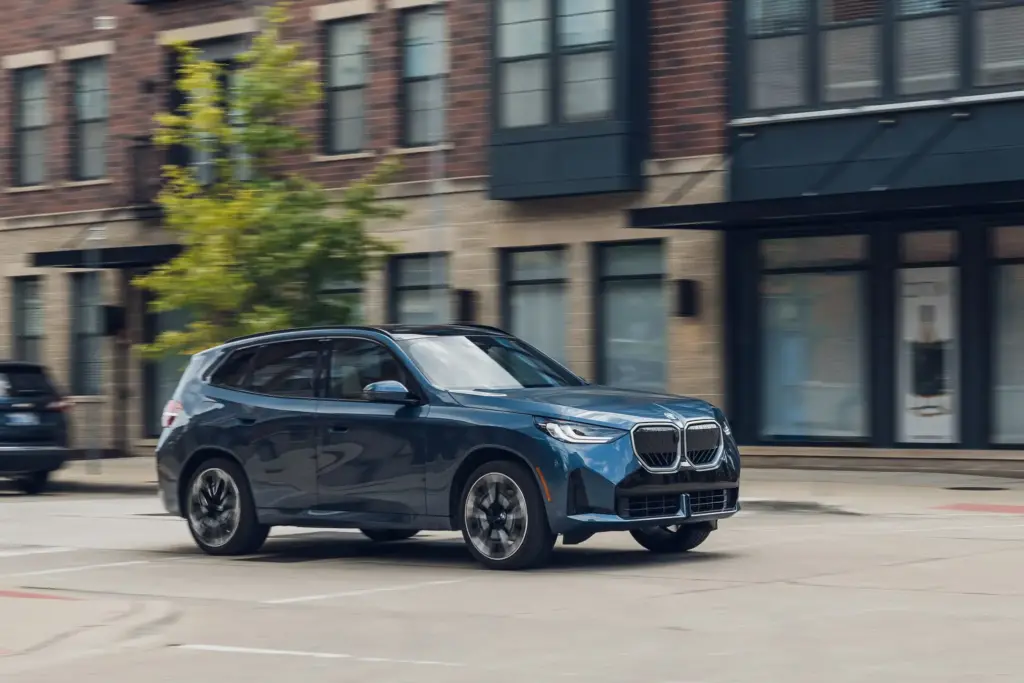
2025 BMW X3 Design and Exterior Styling
Redesigned Exterior Philosophy
The 2025 X3 showcases dramatically different proportions measuring 187.2 inches long, 75.6 inches wide, and 65.4 inches tall—now larger than the first-generation BMW X5[1][2]. The split BMW kidney grille features optional Iconic Glow illumination with geometric patterns emphasizing radical change from predecessors. Twin headlights incorporate new L-shaped daytime running lights, while T-shaped rear light elements create distinctive nighttime signature.
The lower, wider stance improves aerodynamics while the more aggressive modern face represents BMW’s evolving design language across its lineup.
Polarizing Design Elements
The front grille design divides consumer opinions, with some finding it polarizing while most reviewers assert it’s “much better looking than predecessor”[4]. According to Autvex automotive experts, the X3’s bold aesthetic proves more distinctive than conservative German rivals like the Audi Q5 and Mercedes GLC, though this may not appeal universally.
Design Reception:
- Non-M Sport grille considered less attractive than M Sport version by enthusiasts
- Design subjective but described as “far from most offensive-looking BMW in recent years”[4]
- More aggressive than Audi Q5, bolder than Mercedes GLC
- Larger footprint creates parking challenges in tight urban spaces
Model-Specific Exterior Features
Trim-level distinctions provide visual differentiation[1]:
| Feature | X3 30 xDrive | X3 M50 xDrive |
|---|---|---|
| Standard wheels | 19-inch alloys | 20-inch M alloys |
| Exterior styling | Body-color accents | M Sport elements |
| Optional wheels | Up to 21 inches | Up to 21 inches |
| Aerodynamics | Functional elements | Enhanced M components |
| Exhaust | Standard tips | Quad exhaust system |
| Panoramic roof | Sky Lounge optional | Sky Lounge optional |
The M Sport package available on 30 xDrive includes stiffer suspension, racier steering wheel, styling flourishes, variable steering, and thicker anti-roll bars for $2,200[1].
Design Strengths and Weaknesses
Strengths:
- Modern appearance reflecting current BMW design direction
- Distinctive road presence standing apart from competitors
- Functional design elements (air intakes, aerodynamics) serving actual purposes
- Better proportions creating more confident stance
Weaknesses:
- Polarizing grille aesthetic won’t appeal to all traditional BMW buyers
- Subjective styling may limit broad appeal
- Larger footprint creates parking challenges versus predecessor
- Lower height may reduce commanding SUV driving position feel
The redesign’s impact on practicality proves minimal—lower height aids aerodynamics while wider body improves stability through corners[1].
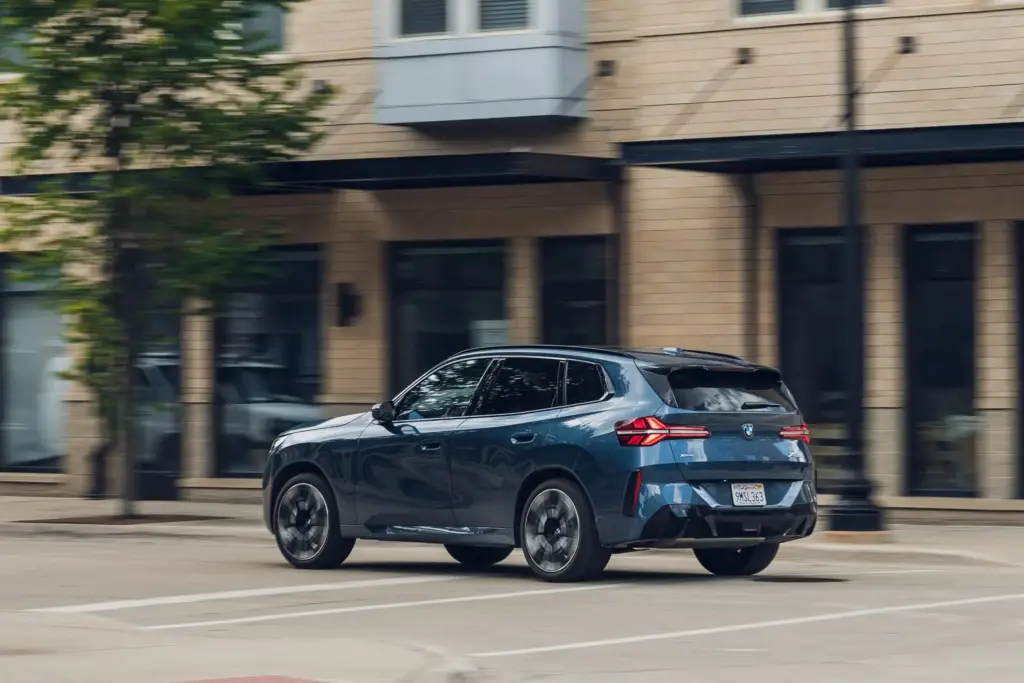
Engine and Powertrain Specifications
X3 30 xDrive Powertrain (Base Engine)
The 2.0-liter turbocharged inline-four with 48-volt mild hybrid produces 255 horsepower at 4,700 rpm and 295 lb-ft of torque at 1,600 rpm—a 6 hp increase over the predecessor[1][3].
Base Powertrain Specifications:
- Displacement: 122 cubic inches (1,998 cc)
- Configuration: Turbocharged DOHC 16-valve Miller-cycle inline-4
- Hybrid system: 48-volt mild hybrid adding up to 23 hp and 148 lb-ft electric boost
- Transmission: 8-speed ZF automatic (best in segment)
- Drivetrain: xDrive all-wheel drive standard
- Power delivery: Smooth, immediate acceleration from hybrid assist
- Character: Adequate power for most buyers’ daily driving needs
The ZF eight-speed automatic provides “crisp and rapid shifts, whether you’re leaving it up to the car or enjoying some do-it-yourself shifting in manual mode”[4].
X3 M50 xDrive Powertrain (Performance Engine)
The 3.0-liter turbocharged inline-six with 48-volt mild hybrid delivers 393 horsepower—a 21 hp increase over the predecessor M40i—and 428 lb-ft of torque[1][2].
Performance Powertrain Features:
| Specification | Details |
|---|---|
| Combined output | 398 hp with hybrid assist |
| Transmission | Same 8-speed ZF automatic |
| Drivetrain | Standard xDrive AWD |
| M Sport Differential | Enhanced cornering capability |
| Character | Genuine BMW inline-six sound and smoothness |
| 0-60 mph | 4.4 seconds (manufacturer estimate) |
The M50’s inline-six provides the authentic BMW performance experience enthusiasts crave, with the smooth power delivery and distinctive sound signature that made BMW’s reputation.
48-Volt Mild Hybrid Technology Benefits
Both powertrains feature 48-volt mild hybrid technology delivering tangible advantages[1][4]:
- Seamless power delivery with electric boost during acceleration eliminating turbo lag
- Improved fuel efficiency versus non-hybrid predecessors despite power increases
- Smooth stop/start functionality less intrusive than traditional systems
- Enhanced low-end torque response for around-town driving confidence
- Regenerative braking capturing energy during deceleration
- Transparent integration drivers barely notice hybrid operation
- Small 0.9-kWh NCM lithium-ion battery adds minimal weight penalty
The system “allows for low-speed electric-only propulsion from a stop” and provides “torque fill at speed”[4].
Transmission and Drivetrain Performance
The 8-speed ZF automatic transmission represents the smoothest, most reliable unit in the segment[1][4]:
- Quick responsive shifts in Sport mode for enthusiast driving
- Imperceptible shifts in Comfort mode for daily commuting
- Paddle shifters standard on both 30 xDrive and M50 trims
- No manual transmission option available for US market
- Standard xDrive all-wheel drive (no front-wheel-drive or rear-wheel-drive variants)
- Intelligent torque distribution optimizes traction in varied conditions
- 50/50 weight distribution with 4,224 lbs curb weight (30 xDrive, 4,246 lbs as tested)
The transmission’s excellence distinguishes the X3 from competitors, particularly versus Audi’s dual-clutch unit which lacks the ZF’s refinement[4].
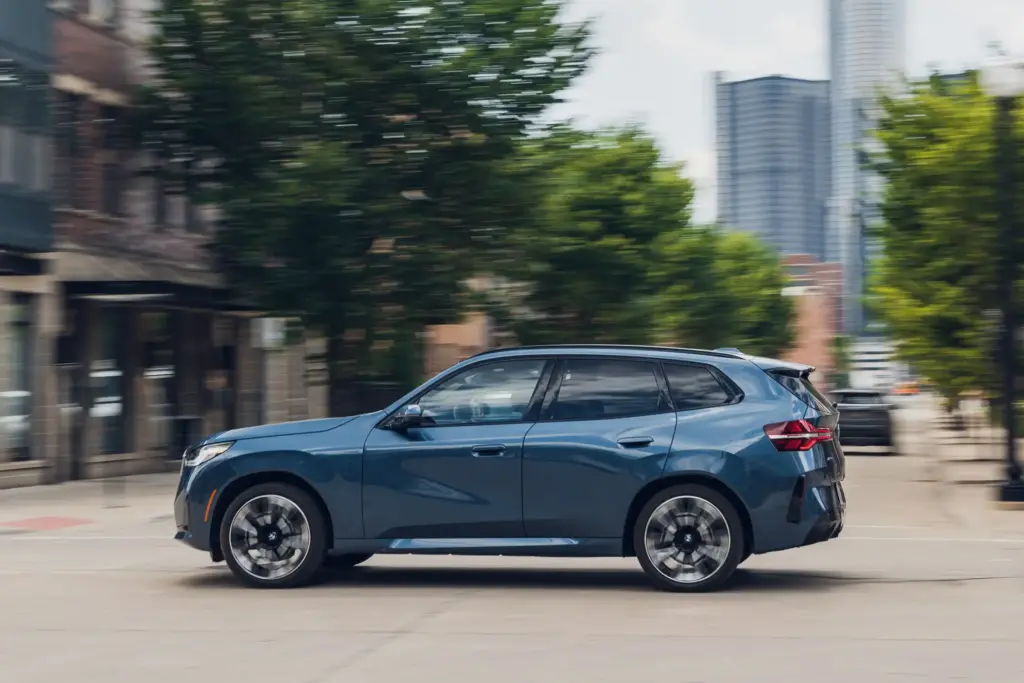
Performance, Handling, and Driving Dynamics
Acceleration and Real-World Performance
Car and Driver’s comprehensive testing confirms impressive real-world performance[1]:
Performance Benchmarks (X3 30 xDrive):
| Test | Result |
|---|---|
| 0-60 mph | 6.2 seconds (6.0 manufacturer estimate) |
| Quarter-mile | 14.6 sec @ 95 mph |
| 0-100 mph | 16.3 seconds |
| Top speed | 131 mph (electronically limited) |
| Braking 70-0 mph | 155 feet (21-inch all-season tires) |
| Roadholding (skidpad) | 0.91 g (excellent for SUV) |
The X3 M50 xDrive achieves 0-60 mph in just 4.4 seconds, placing it among the quickest compact luxury SUVs available[2]. Consumer Reports describes the powertrain as “peppy, polished, and fuel-efficient”[3].
Ride Quality and Handling Balance
Chassis revisions and stiffer body construction improve agility while maintaining comfort[1][3][4]:
- Body roll kept in check through corners providing flat, controlled handling
- Nimble handling praised by reviewers as more refined than previous generation
- Comfortable ride without unnecessary firmness for daily driving
- Sportiness retained without harsh ride quality compromising passenger comfort
- Balance achievement between performance and comfort earns universal praise
BMW Blog notes “body roll is present but controlled, and the ride is comfortable in all but the worst road conditions”[4]. One Consumer Reports tester found “the ride quality a bit too firm, though” another appreciated the overall package[3].
Adaptive Suspension Options
Adaptive M Suspension standard on M50 and optional on 30 xDrive provides adjustable damping[1]:
- Driver-adjustable damping for sportier or more comfortable ride depending on conditions
- Noticeable difference in ride firmness between Comfort and Sport+ modes
- Sport+ mode firms suspension dramatically for track-like handling precision
- Comfort mode provides compliant ride suitable for daily commuting duties
- M Sport package includes stiffer suspension and thicker anti-roll bars ($2,200)
- 21-inch wheels ($1,550) reduce ride comfort versus standard 19-20 inch options
The adaptive system allows drivers to tailor the experience based on driving conditions and personal preferences, though larger wheels noticeably impact ride quality[1].
Steering and Driver Engagement
Variable Sport Steering provides excellent control though lacks some traditional BMW communication[4]:
- Precise steering praised by reviewers for accuracy and consistency
- Lacks communication purists note some BMW feel of past generations missing
- Still best in segment despite compromises for mainstream appeal
- Steering feel described as “somewhat numb” by BMW enthusiasts
- Variable ratio adjusts based on vehicle speed and selected driving mode
- Responsive enough for enthusiast drivers seeking engagement
- Better feedback than most crossovers in competitive landscape
BMW Blog observes “actual road feel is akin to an asthmatic ghost blowing on your fingertips, but precision and weight are dead-on”[4].
Driving Experience Control Modes
Five driving modes significantly alter vehicle character[1]:
- Eco Pro: Maximum fuel efficiency with relaxed throttle response and early upshifts
- Comfort: Balanced ride quality and performance serving as default mode
- Sport: Sharpened throttle, tighter steering, firmer suspension for spirited driving
- Sport+: Maximum performance with aggressive transmission shifts and minimal electronic intervention
- Personal: Customizable individual settings mixing preferred characteristics
Mode switching proves easy via center console buttons or steering wheel controls, with noticeable character changes between settings[1].
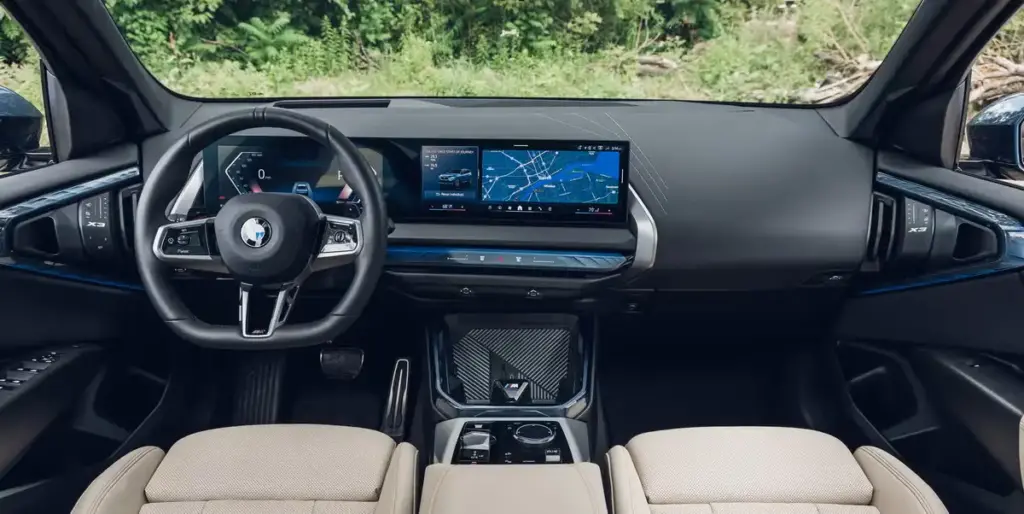
Interior Quality, Space, and Comfort
Cabin Design and Material Quality
The complete interior overhaul presents distinctive modern design emphasizing technology[3][4]:
- Bold, high-tech layout emphasizing screens and minimalist aesthetic
- Plush seating with high-end accents noted by reviewers
- Mixed material quality: Cheaper-feeling plastics appear in less prominent areas
- Price expectations: Some critics note interior doesn’t fully meet luxury segment standards
- Comfortable seats praised by Consumer Reports for all-day comfort
- More spacious than previous generation benefiting from dimensional increases
- Contemporary design proves divisive among traditionalists preferring conservative approach
Consumer Reports notes “the cabin doesn’t feel as luxurious as most other BMWs” despite overall positive assessment[3].
Seating Capacity and Passenger Comfort
Five-passenger capacity provides spacious accommodations[1][3]:
Interior Space Measurements:
| Measurement | Specification | Notes |
|---|---|---|
| Seating capacity | 5 passengers | Optimal for 4 adults |
| Front passenger volume | 55 cubic feet | Generous space |
| Rear passenger volume | 45 cubic feet | Adequate for adults |
| Rear legroom | Adequate | Long-torso passengers fit comfortably |
| Heated front seats | Standard | Power-adjustable sport seats |
| Upholstery | Veganza vegan leather | Vernasca leather optional |
| Comfort assessment | Comfortable for four adults | Fifth passenger acceptable shorter trips |
Front seats prove “not as plush as some competitors” though Consumer Reports testers appreciated overall comfort during extended testing[3].
Cargo Space and Practicality
Class-leading cargo capacity distinguishes the X3[1][3]:
- Seats up: 31.5-32 cubic feet (Car and Driver measured 31.5 cubic feet)
- Seats folded: 67.1 cubic feet maximum capacity
- Improvement: 10% more cargo space than previous generation
- Competitive advantage: Beats Audi Q5 (27.4 cu ft) and Mercedes GLC significantly
- Versatility: 40/20/40 split-folding rear seats allow flexible configurations
- Underfloor storage: Compartments for smaller items organization
- Power liftgate: Standard for convenient hands-free operation
- Spare tire: Now standard (no longer optional cost-cutting measure)
- Practical advantage: More usable cargo space than BMW X1 despite similar specifications
Interior Technology Integration and Complaints
The tech-heavy interior requires adjustment period for new owners[3]:
- Haptic controls require getting used to versus traditional tactile buttons
- Touchscreen-heavy interface not universally loved by all buyers
- Electrical issues: Some early owners report screen flickering and phone disconnects
- Random car resets and alarm malfunctions reported by subset of early adopters
- Dealership quality varies significantly affecting overall ownership experience
- Learning curve steep for BMW’s new iDrive 9 system
- Climate control adjustment clumsy while driving requiring excessive attention
Consumer Reports notes “the controls are harder to use than in the previous X3” despite finding the system “generally easy to use” once learned[3].
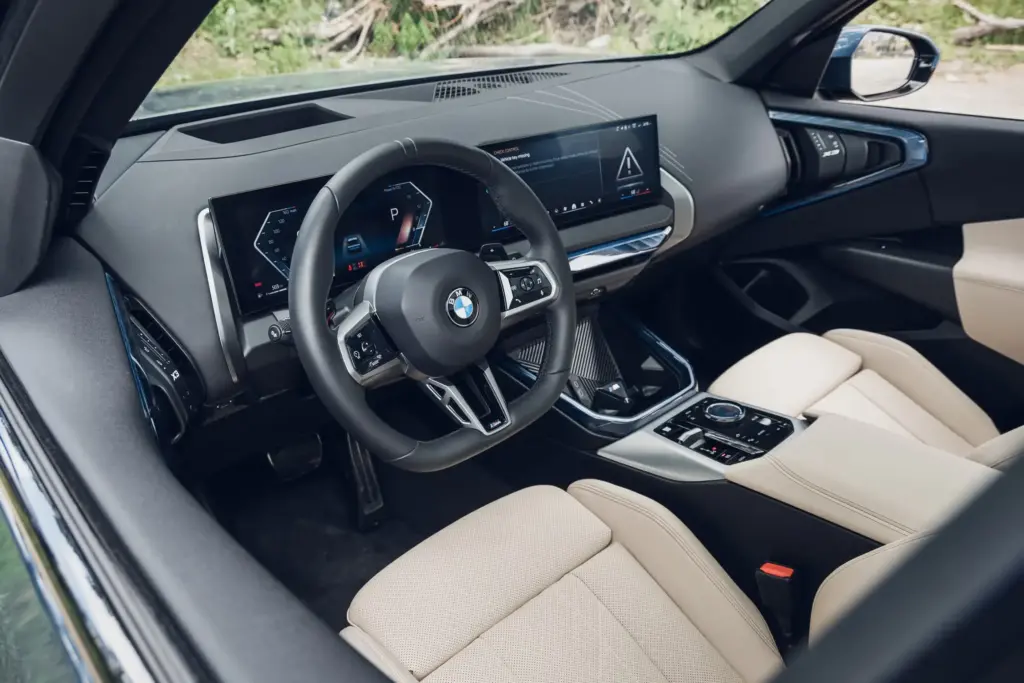
Technology and Infotainment Systems
BMW iDrive 9 Operating System
The 14.9-inch center touchscreen housed in BMW’s Curved Display alongside a 12.3-inch digital instrument cluster creates a single curved pane of glass[1][3].
iDrive 9 System Features:
- Latest BMW Operating System 9 software with customizable home screen
- Generally easy to use though some menu structures overcomplicated
- Physical iDrive rotary controller retained (unlike [X1] and [X2])
- Multiple input methods: touchscreen, voice, steering wheel, rotary controller
- Learning curve for owners transitioning from older BMW systems
- Some controls require multiple menu dives frustrating experienced users
The retention of the physical iDrive controller distinguishes the X3 from smaller BMW models, providing tactile alternative to touchscreen-only operation[1].
Smartphone Integration and Connectivity
Standard connectivity features meet modern expectations[1][3]:
- Wireless Apple CarPlay and Android Auto (both standard without subscription requirements)
- BMW Digital Key Plus allowing smartphone to function as vehicle key
- BMW Intelligent Personal Assistant voice control system with conversational capabilities
- Wireless device charging standard for compatible smartphones
- My BMW App compatibility enabling remote functions through smartphone
- Bluetooth multi-device connectivity supporting multiple phones simultaneously
- USB-C ports for charging modern devices
- Over-the-air software updates capability keeping system current
Entertainment and Streaming Features
Optional entertainment features enhance passenger experience when parked[1][2]:
- Audio and video streaming services accessible when vehicle stopped
- Gaming options including single- and dual-player modes for passengers
- Video streaming platforms: Netflix, Amazon Prime Video, others
- Spotify and Amazon Music integrated natively into interface
- Entertainment options for passengers waiting in vehicle
- 15+ ambient lighting colors creating customizable atmosphere
- Premium audio system available as upgrade
- Standard sound system proves adequate for most buyers
Advanced Driver Interface Options
Optional technology upgrades provide additional functionality[1]:
- Optional head-up display projecting information onto windshield in driver’s line of sight
- Configurable digital gauge cluster with multiple layout options
- Surround View Camera with 3D View visualization capability
- Traffic sign recognition with automatic speed limit information display
- Remote start capability included in Premium package ($3,400)
- Parking assistance systems for parallel and perpendicular parking
- Integration with BMW Connected services for enhanced connectivity
Technology Pros and Cons
According to Autvex analysis of owner feedback[3]:
Advantages:
- Physical iDrive controller retained making operation easier while driving
- Comprehensive smartphone integration standard without subscription fees
- Large high-resolution Curved Display among best in luxury class
- Multiple input methods accommodate different user preferences and situations
Disadvantages:
- Touchscreen-heavy interface requires adjustment period for new users
- Menu structure overcomplicated for some common functions
- Some electrical issues reported by early owners requiring dealer attention
- Learning curve steeper than competitors’ simpler systems
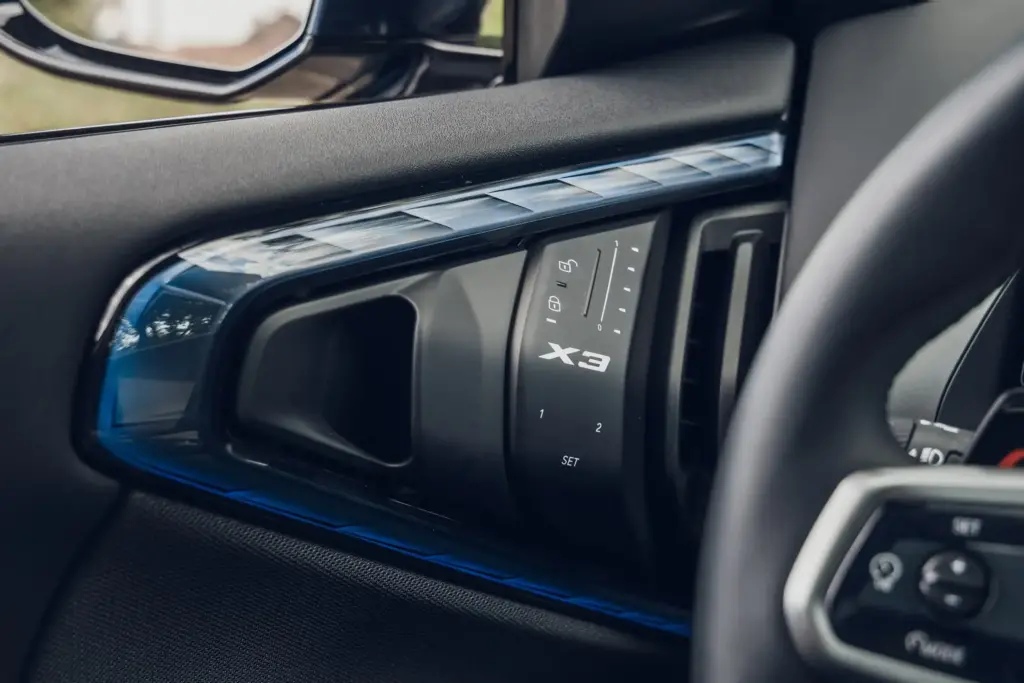
Safety Features and Crash Test Ratings
NHTSA Safety Ratings (2025 Model Year)
The 2025 X3 achieved strong federal crash test results[5]:
NHTSA Test Results:
| Test Category | Rating | Performance Notes |
|---|---|---|
| Overall rating | 5 stars | Highest possible safety rating |
| Side barrier crash | 5 stars | Excellent side impact protection |
| Side pole rating | 5 stars | Superior pole impact performance |
| Rollover resistance | 4 stars | 16.90% calculated rollover risk |
| Dynamic tip result | No tip | Stable in extreme maneuvers |
| Test year | 2025 | Selected for model year testing |
The strong structural integrity in crashes provides reassurance for safety-conscious buyers[5].
IIHS Safety Ratings and Performance
The Insurance Institute for Highway Safety awarded excellent scores across categories[6]:
IIHS Side Impact Test Results:
- Overall evaluation: Good
- Structure and safety cage: Good maintaining occupant compartment integrity
- Driver injury measures: Good across all categories (head/neck, torso, pelvis)
- Rear passenger injury measures: Good for all occupants
- Side impact test: Good ratings for all occupant positions
- Minimal intrusion: Only 28.5 cm B-pillar to seat centerline intrusion
- Low injury risk: Across all occupant positions throughout vehicle
The X3 achieved potential Top Safety Pick+ candidate status pending full evaluation completion, with some sources citing this designation already awarded[5].
Standard Active Safety Features
Every X3 includes BMW’s Active Driving Assistant safety suite[1][3]:
- Automated emergency braking with forward-collision warning detecting potential impacts
- Lane departure warning with lane keep assist guiding vehicle toward center
- Blind spot warning detecting adjacent vehicles in blind spots
- Rear cross-traffic alert when reversing from parking spaces
- Parking sensors front and rear assisting with tight spaces
- Rearview camera with clear image quality
- Speed limit information display showing current posted limits
- Limitation: Only basics offered as standard—advanced features require expensive packages
Available Advanced Driver Assistance
The optional Driving Assistant Plus package adds capabilities[1]:
- Highway Assistant providing hands-free driving on select highways
- Extended Traffic Jam Assist for congested urban driving conditions
- Active cruise control with stop-and-go capability for traffic
- Surround-view camera system with 3D visualization of surroundings
- Advanced parking assistance for parallel and perpendicular parking
- Traffic sign recognition system
- Automatic speed limit assist adjusting cruise based on posted limits
- Cost consideration: Some common features require expensive optional packages
Safety Considerations and Visibility
Practical visibility observations[3]:
- Good outward visibility for crossover segment overall
- Thick A-pillars can hinder forward visibility at busy intersections
- Rear visibility adequate enhanced by standard camera assistance
- Backup sensors essential given vehicle size and dimensions
- Optional 360-degree camera system proves helpful for parking
- Strong structural protection demonstrated in comprehensive crash testing
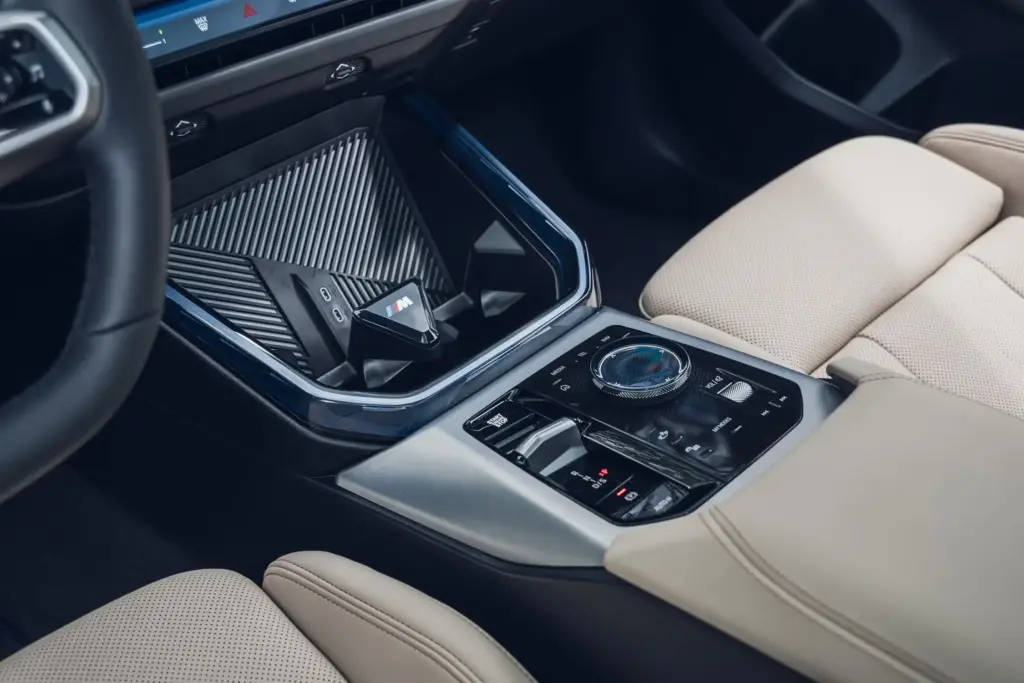
Pricing, Trim Levels, and Value Analysis
X3 30 xDrive Trim Pricing and Equipment
The base 30 xDrive starts at $49,500-$51,125 MSRP with real-world pricing $50,000-$62,000 including popular options[1][3].
Standard Equipment (X3 30 xDrive):
- 255 hp turbocharged four-cylinder with 48-volt mild hybrid
- Standard xDrive all-wheel drive (no front-wheel-drive option)
- 19-inch alloy wheels (best ride comfort)
- Heated and power-adjustable sport front seats
- BMW Curved Display with iDrive 9 operating system
- Wireless Apple CarPlay and Android Auto
- Active Driving Assistant basic safety suite
- Spare tire standard (no longer optional)
- Veganza vegan leather upholstery (Vernasca leather optional)
Consumer Reports purchased their test vehicle anonymously for $56,860 from an area dealer[3].
X3 M50 xDrive Trim Pricing and Equipment
The performance M50 starts at $64,100-$67,075 with real-world pricing $65,000-$73,000[1][2]:
M50 Additional Features:
| Feature Category | M50 Exclusive Equipment |
|---|---|
| Engine | 393 hp turbocharged inline-six with mild hybrid |
| Wheels | 20-inch M alloy wheels (enhanced handling) |
| Suspension | Adaptive M Suspension standard (adjustable damping) |
| Differential | M Sport Differential enhancing cornering |
| Brakes | M Sport Brakes with enhanced stopping power |
| Steering wheel | M leather steering wheel with paddle shifters |
| Exhaust | Quad exhaust system with performance sound |
| Aerodynamics | M-specific components improving dynamics |
| Base equipment | All X3 30 xDrive standard features included |
Popular Packages and Options
Key available packages enhance the experience[1]:
- M Sport Package ($2,200): Stiffer suspension, racier steering wheel, styling flourishes, variable steering, thicker anti-roll bars
- Premium Package ($3,400): Heated steering wheel, heads-up display, panoramic sunroof, additional features
- Driving Assistant Plus: Advanced safety and driver assistance features
- 21-inch wheels ($1,550): Sportier appearance but significantly harsher ride quality
- Extended Merino leather: Premium upholstery upgrade
- Iconic Glow: Illuminated kidney grille
- Premium audio: Enhanced sound system
- Individual paint colors: Premium metallic finishes
Value Analysis: 30 xDrive vs M50
The $15,000-$16,000 price gap creates interesting value considerations[1][3]:
- 30 xDrive recommendation: Represents best value for most buyers’ needs
- Package strategy: Add M Sport and Premium packages to 30 xDrive, still save thousands versus M50
- Performance adequacy: 255 hp proves more than adequate for daily driving and highway passing
- Fuel economy advantage: 29 mpg combined on 30 xDrive versus 27 mpg on M50
- M50 justification: Worth premium only for enthusiasts prioritizing genuine inline-six experience
- Offset reality: Both require premium fuel (91+ octane) offsetting fuel economy savings partially
- Real-world feedback: Most buyers report satisfaction with 30 xDrive performance and efficiency
Competitive Pricing Comparison
The X3’s pricing positions competitively[1][2]:
Segment Pricing Analysis:
| Model | Starting MSRP | Positioning |
|---|---|---|
| Audi Q5 | ~$47,000 | Lower entry point advantage |
| Genesis GV70 | ~$48,000 | More features for less money |
| Volvo XC60 | ~$48,000 | Competitive pricing structure |
| Mercedes-Benz GLC | ~$50,000 | Similar to X3 |
| BMW X3 30 xDrive | $51,125 | Mid-pack pricing |
Price increases prove minimal despite complete redesign, with well-equipped examples ranging $55,000-$65,000—a value proposition praised by reviewers[1][2].
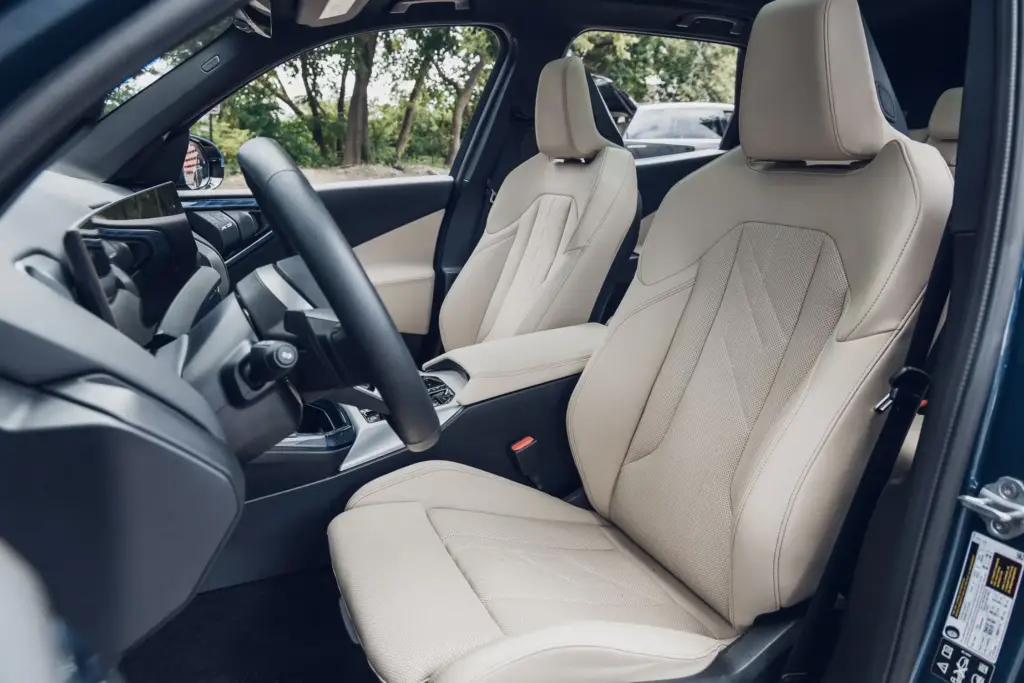
Available Color Options
Exterior Paint Colors
The 2025 X3 offers multiple exterior finishes[1]:
- Alpine White (solid, no-cost option)
- Arctic Race Blue Metallic (popular choice among buyers)
- Black Sapphire Metallic
- Tanzanite Blue Metallic
- Dune Grey Metallic (new for 2025)
- Obsidian Black Metallic
- Vegas Red Metallic
- Additional metallic options available through dealers
- M Sport package may include exclusive color options
- Premium paint colors add $650-$1,000 to base price
Interior Color and Material Choices
Interior customization options[1][3]:
- Standard: Veganza vegan leather upholstery (synthetic)
- Vernasca leather: Optional upgrade providing genuine leather
- Extended Merino leather: Premium option for ultimate luxury
- Multiple interior color combinations available
- Black interior standard across all trims
- Lighter interior colors available for additional cost
- Ambient lighting with 15+ selectable colors
- Optional faux leather and faux suede combinations
Wheel Options and Impact
Wheel choices significantly impact driving experience[1][4]:
Wheel Impact Comparison:
| Wheel Size | Impact on Ride | Noise Level | Fuel Economy | Cost |
|---|---|---|---|---|
| 19-inch | Best comfort | Quieter | Optimal | Standard 30 xDrive |
| 20-inch | Enhanced handling | Noisier | Slightly reduced | Standard M50 |
| 21-inch | Sportier appearance | Harshest ride | Reduced | $1,550 option |
BMW Blog notes ride remains “comfortable in all but the worst road conditions” even with optional 20-inch wheels, though 21-inch wheels prove noticeably harsher[4].
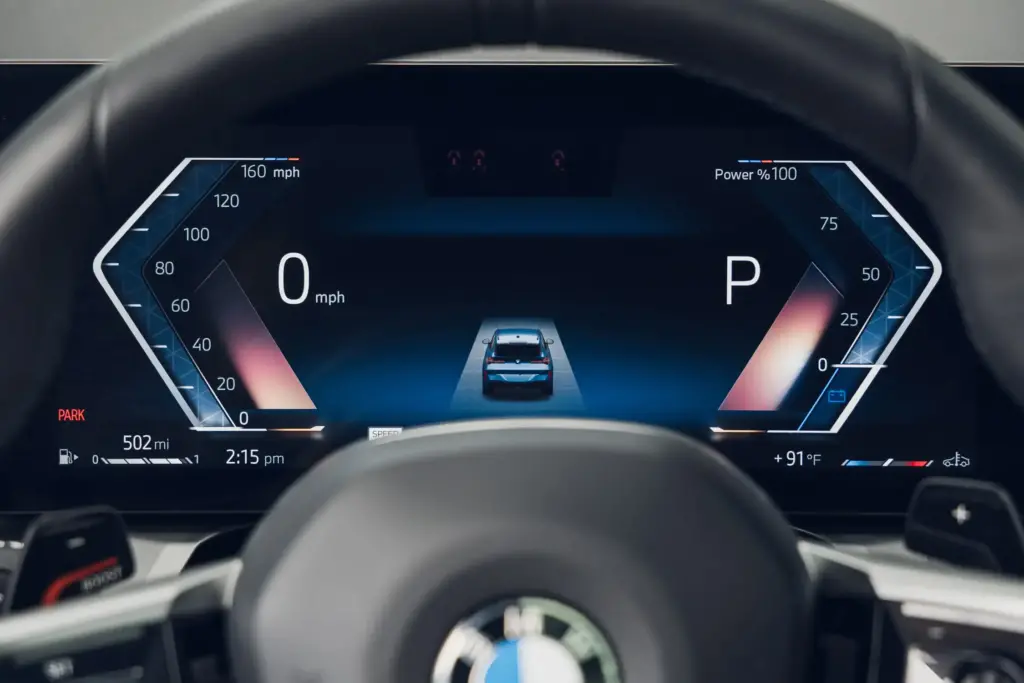
Fuel Economy and Real-World Efficiency
EPA Fuel Economy Ratings
Both trims achieve excellent efficiency for the luxury compact SUV segment[1][3]:
Official EPA Ratings:
| Model | City | Highway | Combined | Range |
|---|---|---|---|---|
| X3 30 xDrive | 27 mpg | 33 mpg | 29 mpg | ~499 miles |
| X3 M50 xDrive | 25 mpg | 30 mpg | 27 mpg | ~464 miles |
The ratings represent best-in-class or highly competitive performance for luxury compact SUVs with comparable power, with the 48-volt mild hybrid contributing measurably to efficiency gains representing significant improvement over the previous generation[1].
Real-World Fuel Economy Testing
Independent testing confirms achievable EPA estimates[1][3]:
- Car and Driver observed: 25 mpg (30 xDrive in mixed driving conditions)
- Motor Trend testing: Confirmed EPA estimates achievable in real-world conditions
- Highway driving: Can exceed EPA ratings with consistent speeds
- Real-world combined: 25-28 mpg typical for most drivers
- Eco Pro mode: Significantly improves efficiency through optimized throttle and transmission
- Sport mode: Reduces fuel economy noticeably with aggressive driving
- Premium fuel requirement: 91+ octane required on both models for optimal performance
- Hybrid benefit: Mild hybrid provides noticeable real-world improvements drivers appreciate
Consumer Reports describes the powertrain as “fuel-efficient” in their comprehensive testing[3].
Fuel Economy vs Competitors
The X3 compares favorably against segment rivals[1]:
- Better than Genesis GV70: Similar power levels but X3 achieves superior efficiency
- Competitive with Audi Q5: Slight advantage to Q5 in some configurations
- Similar to Mercedes-Benz GLC 300: Comparable efficiency with similar performance
- Better than previous-generation X3: Significant improvement over outgoing model
- Hybrid advantage: 48-volt system provides measurable real-world benefits
- Segment leadership: Best fuel economy in performance compact luxury SUV category
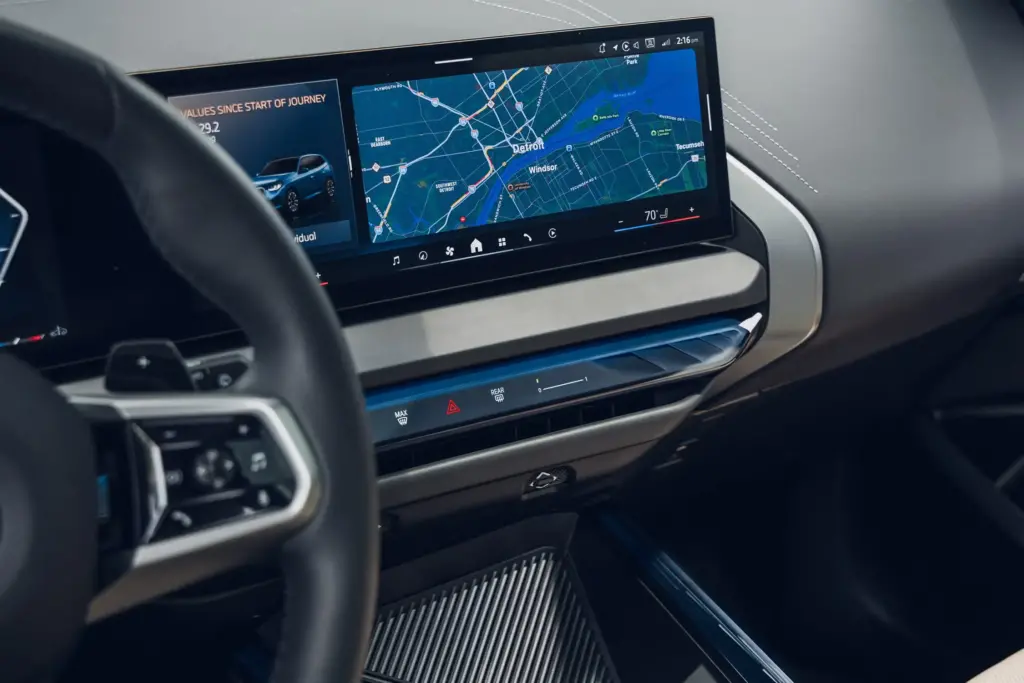
Reliability, Common Issues, and Ownership
Predicted Reliability Ratings
Consumer Reports rates the X3 highly for reliability despite limited long-term data for the 2025 redesign[3]:
- BMW brand reliability remains historically mixed across model lines
- First model year redesign concerns typical for all-new vehicles
- Previous generation X3 earned average reliability scores
- 48-volt mild hybrid system remains unproven in long-term use
- Over 20 years of X3 refinement benefits new fourth-generation model
- Consumer Reports overall positive assessment suggests confidence
Early Owner-Reported Issues
Some early adopters report technology frustrations[3]:
Reported Concerns:
- Electrical problems including screen flickering and phone disconnects
- Random car resets and alarm system malfunctions
- Infotainment system frustrations common among new owners
- Some vehicles reportedly in dealer service for extended periods (4+ months)
- Dealership quality varies significantly affecting ownership experience quality
- Technology learning curve steep for BMW’s new iDrive 9 system
- Most owners remain happy overall despite minor technology issues
- Some owners wish they retained previous-generation X3 models
Warranty Coverage
BMW provides comprehensive protection[1]:
2025 X3 Warranty Structure:
| Coverage Type | Duration/Mileage |
|---|---|
| Basic warranty | 4 years / 50,000 miles |
| Powertrain warranty | 4 years / 50,000 miles |
| Complimentary maintenance | 3 years / 36,000 miles |
| Corrosion protection | 12 years / unlimited miles |
| Roadside assistance | 4 years / unlimited miles |
| Extended options | BMW Ultimate Care+ available for purchase |
Estimated Ownership Costs
Typical luxury SUV ownership expenses apply[1]:
- Premium fuel required: 91+ octane adds ongoing expense versus regular unleaded
- Higher insurance costs: Than non-luxury competitors due to repair costs
- Maintenance costs: Above segment average for German luxury brands
- Parts and service: More expensive than mainstream brands like Toyota or Honda
- Fuel efficiency benefit: 27-29 mpg combined helps offset premium fuel costs
- Depreciation expected: Average for luxury compact SUVs based on historical trends
- Five-year total cost: Competitive within luxury segment overall
- Resale values: Historically strong for X3 nameplate
Owner Satisfaction and Long-Term Perspective
Mixed early owner feedback emerges[3]:
- Electrical issues prove frustrating for affected owners
- Most owners remain satisfied with driving dynamics and performance
- Technology complaints common but may improve with system familiarity
- Strong BMW enthusiast community and brand loyalty evident
- Previous X3 owners note significant improvements over predecessor
- Some owners report poor dealer service experience
- Long-term satisfaction data pending for this redesign
- Consumer Reports maintains overall positive assessment despite concerns
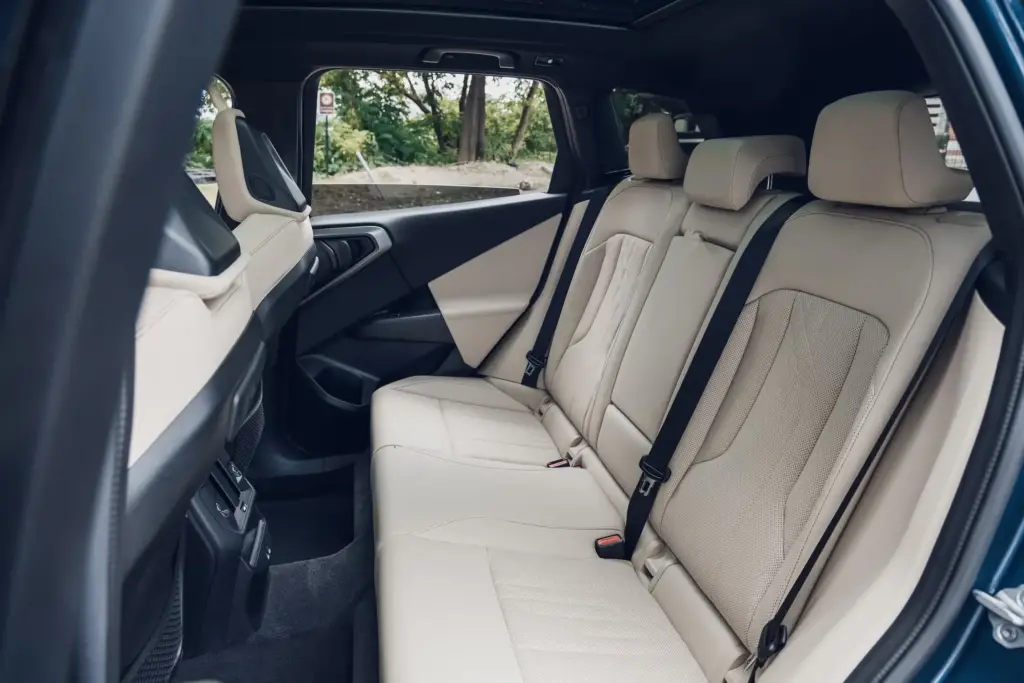
Towing Capacity and Utility
Towing Specifications
Class-leading towing capability distinguishes the X3[1][2]:
Towing Capacity by Trim:
| Trim | Maximum Capacity | Notes |
|---|---|---|
| X3 30 xDrive | 4,000 pounds | When properly equipped with towing package |
| X3 M50 xDrive | 4,850 pounds | Maximum segment-leading capacity |
| Comparison | Beats most competitors | Significantly superior to rivals |
| Use cases | Boats, trailers, campers | Sufficient for recreational towing |
| Impact | Reduces fuel economy | Towing impacts MPG measurably |
The towing advantage proves substantial—many competitors manage only 3,500 pounds maximum capacity[2].
Practical Utility Features
Standard utility enhancements[1]:
- Standard spare tire (no longer cost-cutting optional equipment)
- Power liftgate standard with hands-free operation capability
- 40/20/40 split-folding rear seats allowing flexible cargo configurations
- Underfloor storage compartments for smaller items organization
- Cargo area tie-downs and hooks securing loads safely
- Roof rails standard for cargo boxes and recreational equipment
- Standard all-wheel drive aids towing stability in varied conditions
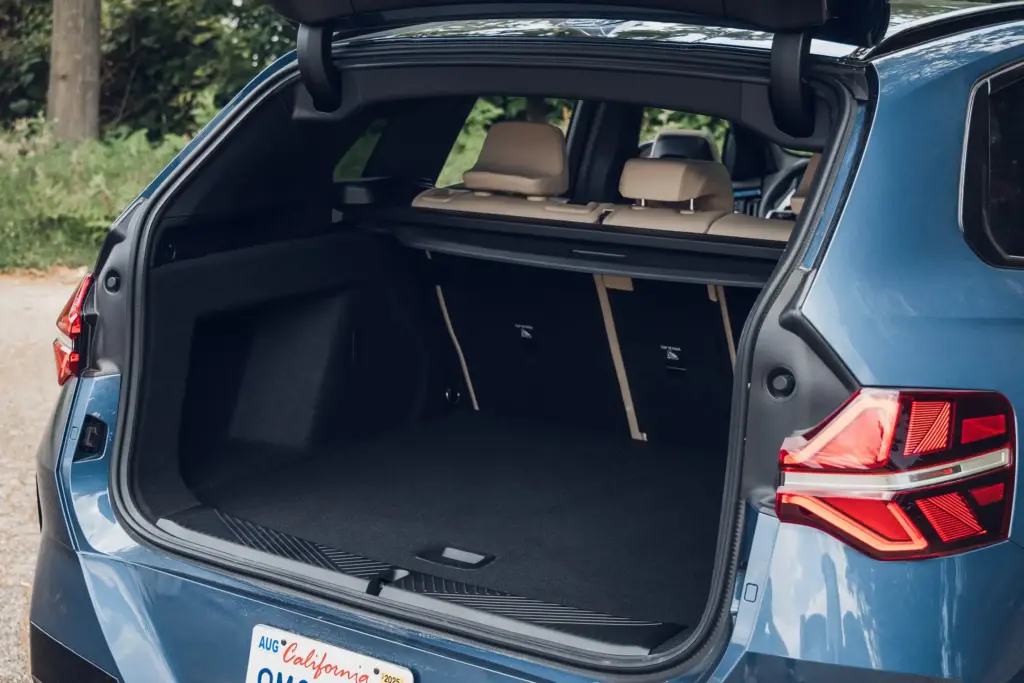
Used 2025 BMW X3 Market Analysis
Current Used Market Availability
Growing inventory emerges as early adopters trade vehicles[7]:
Used Market Snapshot (October 2025):
| Metric | Data |
|---|---|
| Price range | $43,828-$60,495 |
| Typical pricing | $46,000-$56,000 |
| Mileage range | 1,000-14,348 miles |
| Condition | Most listings under 10,000 miles |
| History | Clean history reports typical |
| Ownership | Single-owner vehicles common |
Used Pricing and Depreciation
Significant depreciation creates opportunities[7]:
- Depreciation: $3,000-$8,000 below MSRP for low-mileage examples
- Sample pricing: 30 xDrive with 4,193 miles at $46,288 ($3,870 below market average)
- Sample pricing: 30 xDrive with 8,145 miles at $43,828 ($7,837 below market average)
- Sample pricing: M50 with 13,294 miles at $60,495 ($5,374 below market average)
- Market trend: Used BMW prices rose 11% in July 2025
- X3-specific: Saw mid-$4,000 increases (approximately 13% gain)
- Residual values: Strong for redesigned model suggesting confidence
Certified Pre-Owned Options
CPO availability grows at select dealers[7]:
- Extended warranty coverage through BMW CPO program
- 360-point inspection process ensuring vehicle condition
- 24/7 roadside assistance providing peace of mind
- Trip interruption protection covering lodging and rental costs
- Premium pricing over non-CPO examples (typically $2,000-$3,000)
- Peace of mind for first-year redesign concerns
Best Time to Buy Used 2025 X3
Strategic timing considerations[7]:
- Current market (October 2025) shows limited depreciation from MSRP
- Wait 12-18 months for better values as more inventory enters market
- Lease returns will increase supply significantly in 2026-2027
- Early trade-ins from buyers experiencing electrical issues
- New car manufacturer incentives may offer better value currently than used
- First model year redesign concerns favor waiting for 2026 production
- CPO options preferable for redesign model providing warranty protection
What to Look for When Buying Used
Inspection priorities[3]:
- Verify comprehensive service history and maintenance documentation
- Check for electrical issue history (screen flickering, phone connectivity problems)
- Inspect for all software updates completed by previous owner or dealer
- Test all technology features thoroughly before purchase commitment
- Verify remaining factory warranty coverage and transferability
- Request complete vehicle history report documenting accidents and ownership
- Test drive in multiple driving modes assessing all systems
- Check for any outstanding recall campaigns requiring service completion
- Inspect for paint damage and wheel curb rash
- Verify no random reset or alarm system issues exist
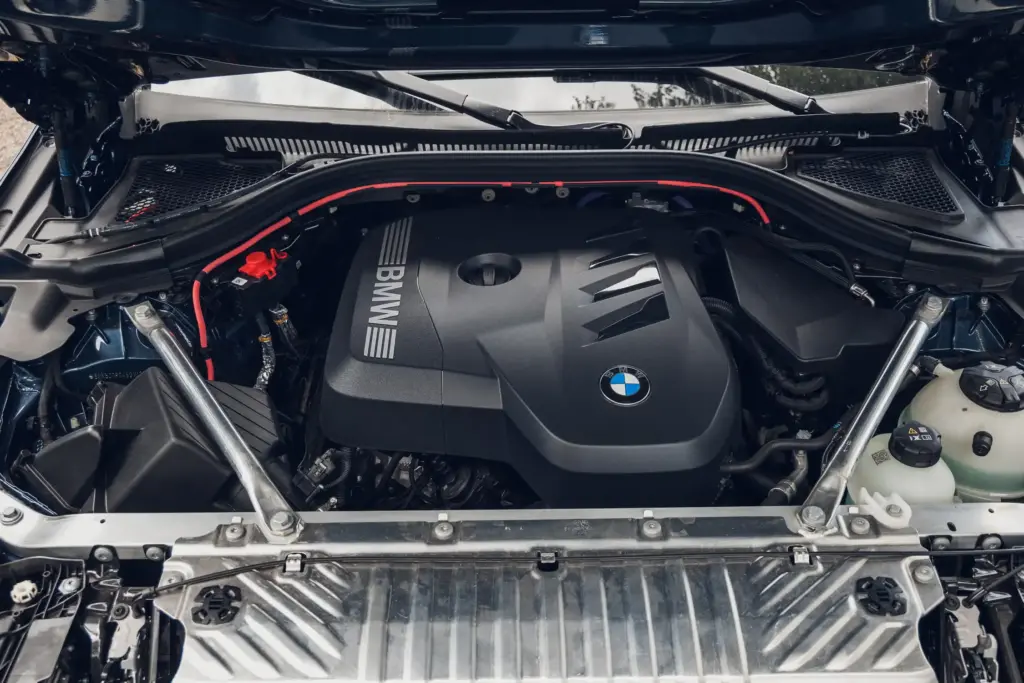
2025 BMW X3 vs Key Competitors
BMW X3 vs Audi Q5
The German rivals offer contrasting approaches to luxury compact SUVs[1][8]:
Head-to-Head Comparison:
| Factor | 2025 BMW X3 | 2026 Audi Q5 |
|---|---|---|
| Base power | 255 hp | 268 hp (slight advantage) |
| Transmission | 8-speed ZF automatic (best in segment) | 7-speed dual-clutch |
| Driving character | More engaging, sportiest | More refined, comfortable |
| Cargo capacity | 32 cu ft (class-leading) | 27.4 cu ft |
| Starting price | $51,125 | ~$47,000 (lower entry) |
| Fuel economy | 29 mpg combined | Competitive, slight advantage |
| Best for | Driving enthusiasts | Comfort-seekers |
The X3 features “the best transmission of the group—a conventional 8-speed automatic made by ZF, one of the best transmissions available, very smooth shifting, well-made, robust, reliable”[8].
BMW X3 vs Mercedes-Benz GLC
Both German luxury leaders produce 255 horsepower from 2.0-liter turbocharged four-cylinders[1][8]:
- Transmission advantage: X3 superior ZF 8-speed automatic performance
- Driving dynamics: X3 slightly better overall handling and engagement
- Luxury ambiance: GLC more traditional luxury materials and aesthetic
- Ride quality: GLC more comfortable for passengers prioritizing smoothness
- Cargo capacity: X3 advantage with more usable space
- Expert conclusion: Edmunds declares “BMW X3 little bit better across board”
- Segment favorite: X3 named Edmunds’ favorite small luxury SUV overall
- Pricing: Similar structures with comparable equipment levels
BMW X3 vs Volvo XC60
The Swedish competitor prioritizes different attributes[1]:
- Philosophy: XC60 emphasizes comfort and serenity over sportiness
- Dynamics: X3 delivers more engaging driving experience
- Electrification: XC60 offers available plug-in hybrid T8 option (not available on X3)
- Performance: X3 M50 more powerful than XC60 performance variants
- Design: XC60 minimalist Scandinavian luxury aesthetic appeals to different buyers
- Cargo capacity: X3 better capacity advantage for families
- Pricing: Similar with different philosophical value propositions
- Choice: XC60 better for comfort priority; X3 for performance focus
BMW X3 vs Genesis GV70
The Korean luxury challenger offers compelling value[1]:
- Starting price: Genesis lower (~$48,000 vs ~$51,000) offering more standard features
- Value proposition: Genesis provides more equipment for less initial investment
- Driving feel: X3 sportier handling and better engagement
- Fuel efficiency: X3 more efficient (29 vs lower MPG combined)
- Cargo space: X3 significantly more (32 vs 28.9 cubic feet)
- Initial value: Genesis better proposition initially
- Reviewer preference: X3 preferred by automotive journalists for driving dynamics
- Comfort focus: Genesis better for luxury comfort priority
Other Alternatives Worth Considering
Additional competitors deserve evaluation:
- BMW X1: Smaller, less expensive BMW option sharing technology
- BMW X5: Larger three-row alternative for growing families
- Porsche Macan: Sportier dynamics, smaller cargo capacity, higher price premium
- Lexus NX: Legendary Toyota reliability with available hybrid powertrain
- Acura MDX: Three-row alternative with value pricing structure
- Mazda CX-90: Non-luxury alternative with excellent driving dynamics
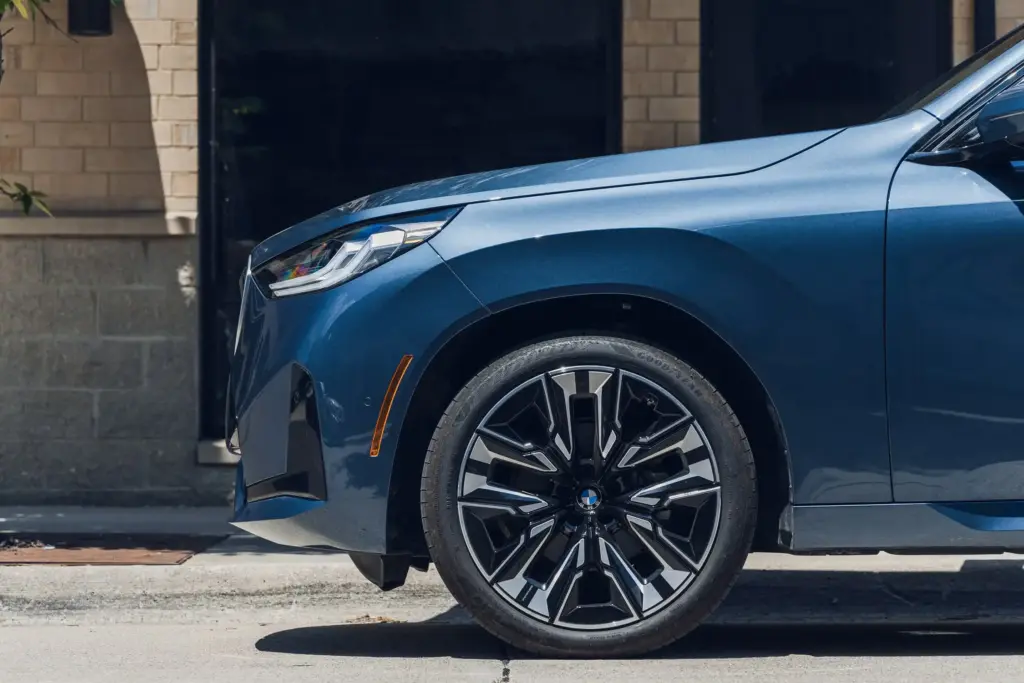
Final Verdict: Should You Buy the 2025 BMW X3?
Key Strengths of 2025 Redesign
The complete fourth-generation redesign delivers compelling advantages[1][3]:
- Complete redesign (not evolutionary update) bringing comprehensive improvements
- Excellent driving dynamics balancing sportiness and comfort effectively
- Class-leading cargo capacity (31.5-67 cubic feet) exceeding segment rivals
- Powerful, efficient engines with 48-volt mild hybrid technology
- Best transmission in segment (8-speed ZF automatic)
- Strong fuel economy (27-29 mpg combined) for performance level
- Latest iDrive 9 technology with physical controller retained
- 5-star NHTSA safety rating with strong IIHS scores
- Standard all-wheel drive across entire lineup
- Impressive towing capacity (4,000-4,850 lbs) beating competitors
Main Weaknesses and Compromises
Inevitable trade-offs accompany the redesign[1][3]:
- Polarizing exterior design: Split kidney grille proves divisive among buyers
- Mixed interior material quality: Some cheap-feeling plastics in less prominent areas
- Touchscreen-heavy controls: Require adjustment period for new owners
- Early electrical issues: Reported by some owners requiring dealer attention
- First model year concerns: Redesign reliability questions typical
- Expensive packages required: Some common features not standard
- Steering feel: Lacks some traditional BMW communication enthusiasts expect
- Premium fuel requirement: 91+ octane adds ongoing ownership costs
- Technology learning curve: Steep for iDrive 9 system
- Significant trim gap: $15,000+ separates 30 xDrive and M50
Best Trim and Configuration Recommendation
Autvex analysis suggests the X3 30 xDrive represents best value[1][3]:
- Add M Sport ($2,200) and Premium ($3,400) packages, still save thousands versus M50
- 255 hp proves adequate for daily driving and highway passing needs
- 29 mpg combined impressive for performance level achieved
- M50 worth premium only for enthusiasts prioritizing genuine inline-six experience
- 19-inch wheels offer best ride comfort (avoid harsh 21-inch option)
- Real-world owner feedback suggests testing both trims before final decision
- Most buyers report complete satisfaction with 30 xDrive performance and efficiency
Who Should Buy the 2025 BMW X3?
The redesigned X3 suits specific buyer profiles[1][3]:
- Driving enthusiasts wanting balanced luxury compact SUV
- Families needing spacious cargo with strong towing capability
- Tech-forward buyers comfortable with learning curve
- BMW brand loyalists seeking updated fourth-generation model
- Fuel efficiency priorities with performance expectations
- Transmission excellence: Buyers wanting best automatic in segment
- Balanced preferences: Anyone seeking sportiness without harsh ride
- Design appreciation: Shoppers loving redesigned exterior styling
Who Should Wait or Consider Alternatives?
Alternative choices make more sense for[1][3]:
- First model year avoiders: Wait for 2026 production refinements
- Electrical issue concerns: Those worried about early technology problems
- Budget-conscious buyers: Genesis GV70, Audi Q5 offer better initial value
- Tech-averse shoppers: Frustrated by touchscreen-heavy controls
- Design language critics: Anyone disliking new BMW aesthetic direction
- Ultimate luxury seekers: Prioritizing materials should choose Mercedes-Benz GLC
- Plug-in hybrid needs: Volvo XC60 T8 offers PHEV option unavailable on X3
- Third-row families: Need larger BMW X5 for additional seating
Overall Assessment and Recommendation
The complete redesign improves upon an already solid foundation[1][3]. Driving dynamics remain the benchmark in the segment, while technology updates prove significant though require adjustment period. Early reliability concerns remain typical for first model year redesigns—buyers concerned about electrical issues should wait for 2026 production refinements. Those wanting the latest technology and design should buy now despite first-year considerations.
Consumer Reports and professional reviewers maintain generally positive assessments, with the X3 earning a spot on Car and Driver’s Editors’ Choice 2025 list[1]. The publication describes it as “a sensible small luxury SUV that fulfills the BMW promise” of balanced performance and practicality.
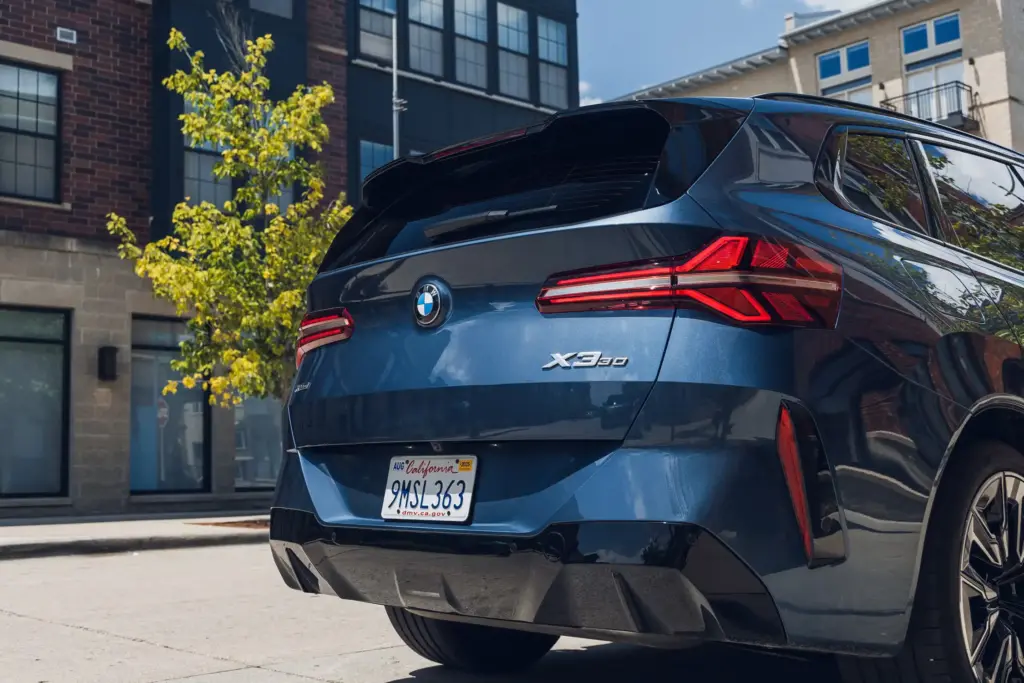
Key Takeaways
- The 2025 BMW X3 is completely redesigned fourth generation with 255-393 hp mild hybrid powertrains achieving 27-29 mpg combined.
- Class-leading 31.5-67 cubic feet cargo capacity and 4,000-4,850 pounds towing capability exceed most luxury compact SUV competitors.
- Best-in-segment 8-speed ZF automatic transmission outperforms rivals’ dual-clutch and conventional automatics for refinement and reliability.
- Consumer Reports rates X3 highly despite noting controls harder to use; some early owners report electrical issues.
- X3 30 xDrive ($51,125) represents best value; add M Sport and Premium packages while saving thousands versus M50.
- Achieved 5-star NHTSA overall rating with strong IIHS Good ratings across categories including side impact protection.
- First model year redesign concerns typical; buyers worried about reliability should wait for 2026 production refinements.
FAQs
Is the 2025 BMW X3 completely redesigned?
Yes, the 2025 BMW X3 is completely redesigned as the fourth generation (G45) with all-new architecture, exterior styling, interior design, 48-volt mild hybrid powertrains, and iDrive 9 technology[1][2]. This represents the first major transformation rather than an evolutionary update, with longer, wider, and lower proportions creating the most comprehensive change since the X3’s 2004 debut.
What’s the difference between X3 30 xDrive and M50?
The X3 30 xDrive ($51,125) features a 255 hp turbocharged 2.0-liter four-cylinder achieving 29 mpg combined and 0-60 mph in 6.2 seconds, while the M50 ($64,100) delivers 393 hp from a turbocharged 3.0-liter inline-six achieving 27 mpg combined and 0-60 mph in 4.4 seconds[1][2]. The M50 adds Adaptive M Suspension, M Sport Differential, 20-inch wheels, and performance brakes.
Does the 2025 BMW X3 have Apple CarPlay?
Yes, the 2025 BMW X3 includes wireless Apple CarPlay and Android Auto as standard equipment across all trims without subscription requirements[1][3]. The system integrates with BMW’s iDrive 9 operating system displayed on the 14.9-inch Curved Display, supporting wireless connectivity for both platforms alongside BMW Digital Key Plus smartphone integration.
How much cargo space does the 2025 X3 have?
The 2025 BMW X3 provides class-leading 31.5-32 cubic feet behind rear seats and 67.1 cubic feet maximum with seats folded—10% more than the previous generation[1][3]. This significantly exceeds competitors including Audi Q5 (27.4 cu ft) and Mercedes GLC, with 40/20/40 split-folding rear seats, underfloor storage, power liftgate, and standard spare tire.
Is the 2025 BMW X3 reliable?
Consumer Reports rates the 2025 X3 highly for reliability despite limited long-term data for the redesign[3]. However, some early owners report electrical issues including screen flickering, phone disconnects, random car resets, and alarm malfunctions, with dealership service quality varying significantly. First model year redesign concerns remain typical, with the previous generation earning average reliability scores. Comprehensive warranty coverage provides protection.
What is the towing capacity of the 2025 X3?
The 2025 BMW X3 30 xDrive tows up to 4,000 pounds when properly equipped, while the M50 xDrive achieves class-leading 4,850 pounds maximum capacity[1][2]. This significantly beats most luxury compact SUV competitors managing only 3,500 pounds, providing sufficient capability for boats, trailers, and campers. Proper equipment includes the factory towing package, with xDrive all-wheel drive aiding stability.
Does the 2025 X3 require premium gas?
Yes, both the X3 30 xDrive and M50 xDrive require premium unleaded gasoline (91+ octane) for optimal performance and engine protection[1]. Using premium fuel ensures the turbocharged engines achieve advertised horsepower and fuel economy ratings while protecting long-term engine health. The premium fuel requirement adds ongoing ownership costs compared to vehicles accepting regular unleaded gasoline.
Is the 2025 X3 bigger than the previous generation?
Yes, the 2025 BMW X3 measures longer (187.2″), wider (75.6″), and lower (65.4″) than the previous generation—now larger than the first-generation BMW X5[1][2]. The redesign provides 10% more cargo capacity reaching 31.5-67 cubic feet, more spacious interior accommodations with 55 cubic feet front and 45 cubic feet rear passenger volume, and improved aerodynamics from lower height.
What are common problems with the 2025 BMW X3?
Early owners report electrical issues including screen flickering, phone disconnects, random car resets, and alarm malfunctions[3]. Technology frustrations prove common with the touchscreen-heavy iDrive 9 interface and steep learning curve. Some vehicles reportedly spent extended periods (4+ months) in dealer service for repairs. Dealership quality varies significantly affecting ownership experience. Most owners remain satisfied with driving dynamics despite technology concerns.
Is the BMW X3 M50 worth the extra money?
The $15,000-$16,000 M50 premium delivers genuine BMW inline-six performance with 393 hp, 4.4-second 0-60 mph acceleration, Adaptive M Suspension, M Sport Differential, and 20-inch wheels[1]. However, most drivers find the 30 xDrive’s 255 hp adequate for daily driving while achieving superior 29 mpg combined. The M50 proves worth it only for enthusiasts prioritizing genuine inline-six experience and maximum performance capability.
References
- Car and Driver. (2025). 2025 BMW X3 Review, Pricing, and Specs. https://www.caranddriver.com/bmw/x3
- Motor Trend. (2025). 2025 BMW X3 Review: Expert Insights, Pricing, and Trims. https://www.motortrend.com/cars/bmw/x3/
- Consumer Reports. (2024). First Drive: 2025 BMW X3 Proves Sporty and Sophisticated. https://www.consumerreports.org/cars/suvs/2025-bmw-x3-review-a1499995649/
- BMW Blog. (2025). 2025 BMW X3 xDrive30 Review: It’s Complicated. https://www.bmwblog.com/2025/05/16/2025-bmw-x3-xdrive30-review-driving-impressions/
- Yalla Motor. (2025). 2025 BMW X3 Safety Ratings: A Comprehensive Review. https://www.yallamotor.com/news/2025-bmw-x3-safety-ratings:-a-comprehensive-review-37013
- Insurance Institute for Highway Safety. (2024). 2025 BMW X3 Safety Ratings. https://www.iihs.org/ratings/vehicle/bmw/x3-4-door-suv/2025
- Edmunds. (2025). 2025 BMW X3 for Sale Near Me. https://www.edmunds.com/bmw/x3/2025/for-sale/
- YouTube. (2025). 2025 Audi Q5 vs BMW X3 vs Mercedes GLC 300 Comparison. https://www.youtube.com/watch?v=JJ_xNzS1VOY

I am a senior automotive analyst at Autvex. Expert vehicle evaluations, in-depth reviews, and objective analysis helping readers make informed automotive decisions with years of industry experience.

